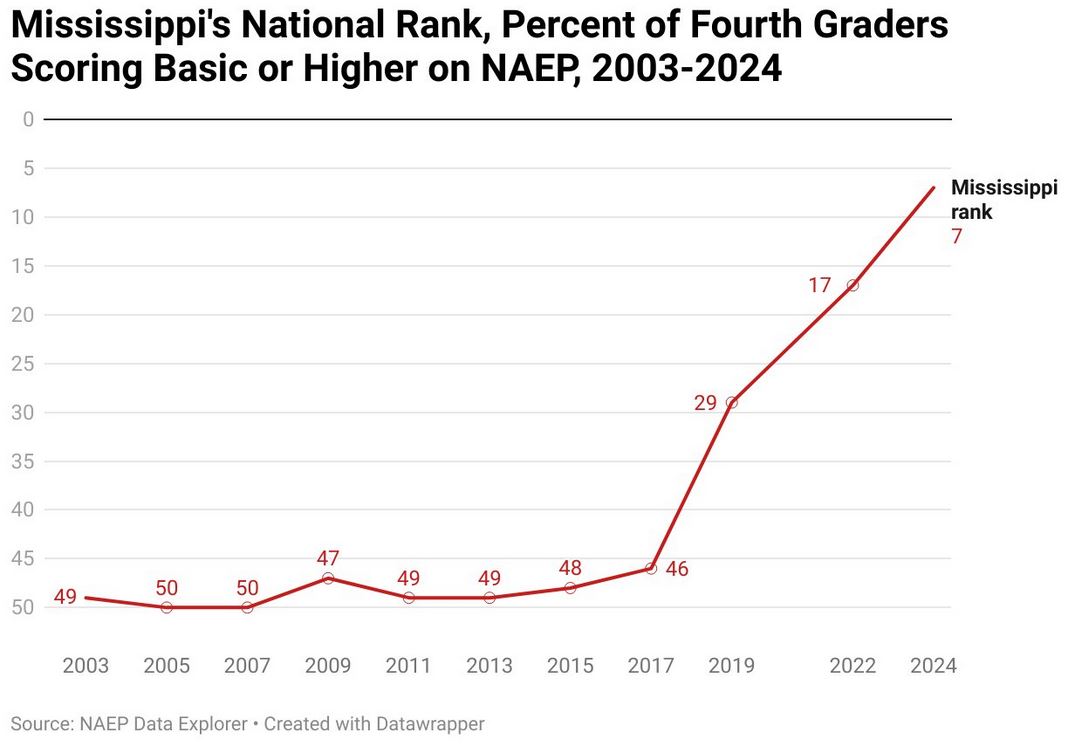
That is the beauty of having education be a state responsibility. Different states can take different approaches, and we see what works. It’s called the “Laboratory of Democracy”.
Mississippi is our poorest state, but it is winning in elementary education, doing about as well as Ohio.
Education usually tracks with socioeconomic status. Based on GDP per capita, Mississippi is at about 60% of the US average and is 70% of Ohio’s average.
Mississippi and Ohio are very different, but there are certainly lessons to be learned from Mississippi about how to teach students from low income families.
Research in education is notoriously uneven. Education administrators aren’t necessarily very smart. Seeing what Mississippi is doing and how they are teaching, could be applicable to districts, schools and students that are currently unsuccessful.
On every measure made by the National Assessment of Educational Progress (NAEP), the Department of Defense Education Activity (DoDEA) is performing much better than any state.
The DoDEA provides public education from Prekindergarten through 12th grade for children of U.S. Department of Defense personnel. It’s schools are located on military bases in the U.S. and in several overseas locations.
States and school districts that actually care about the education of their students, should move away from innovative education theory promoted by university departments of education, and look to organizations that are actually successful.
Each district has it’s own challenges, so not all strategies are transferable. Mississippi and the DoDEA aren’t ideal educational environments, but they are getting impressive results. People who care should look at what works and what can be adapted to their schools.
Leave a Reply